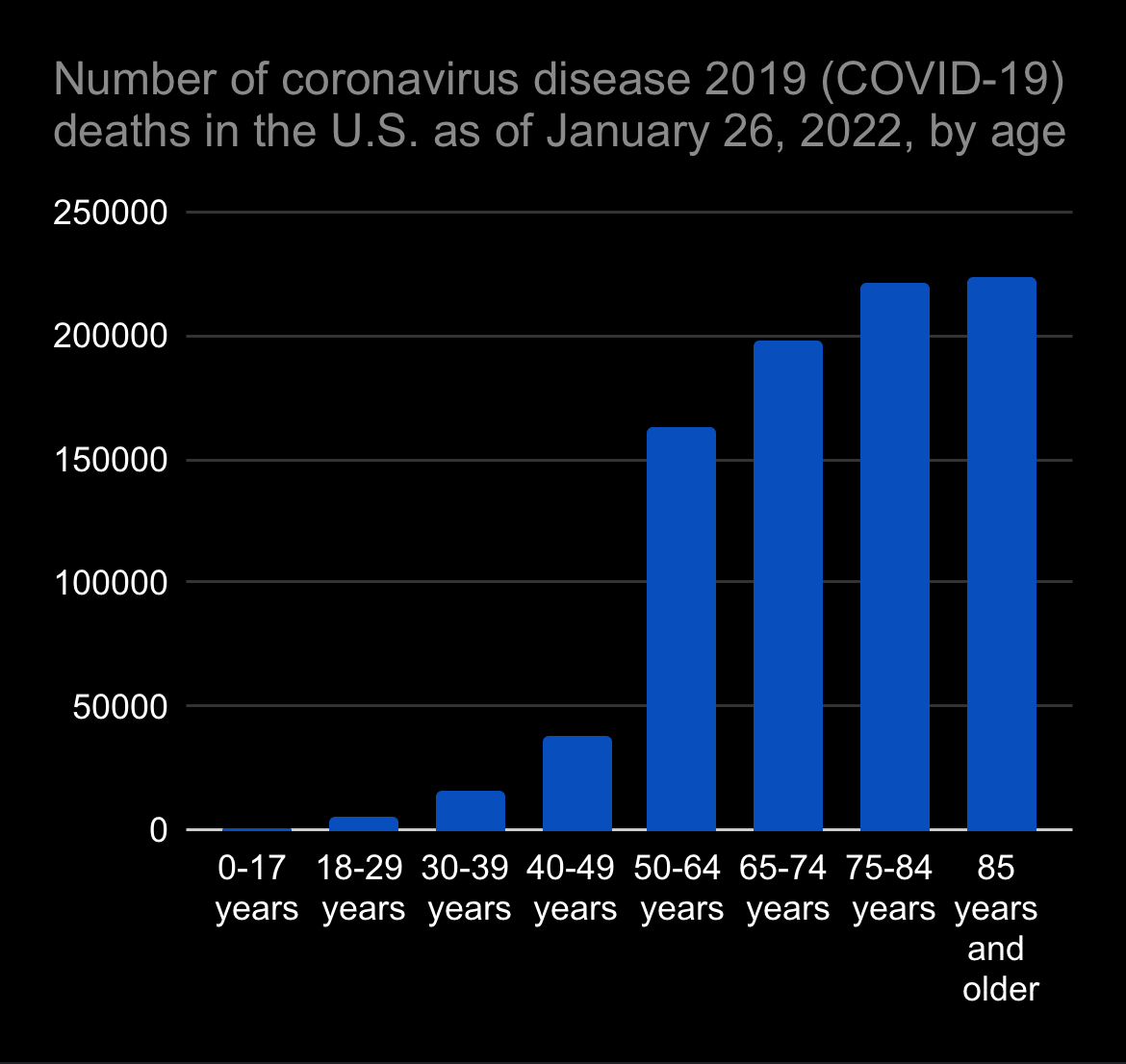Yes, this is a “fact check”, although one limited by estimates - all data is from, or derived from, official sources generally consider as authoritative.
The U.S. state of Florida is claimed to have done badly in terms of the impact of COVID-19, in fact it is maligned as one of the worst states in numerous reports.
“Florida’s COVID-19 deaths are still among the highest in the nation”
Now that the COVID-19 figures are starting to settle, we are in a better position to judge the overall outcomes to see if the figures reflect these kinds of alarming reports.
If Florida really did so badly, we should be able to show that a much greater proportion of the vulnerable demographic died versus the population in general, as restrictive measures were supposed to protect the vulnerable. This approach eliminates bias that may be from point samples, or that is confounded by not adjusting for the size of the vulnerable population, and it avoids the complications around comparing based on what count as “cases”.
In the U.S. those aged 50 years and over make up 93% of COVID-19 deaths (Statista, Jan. 26th, 2022). Therefore COVID-19 death statistics are highly sensitive to the age distribution of a population. The dramatic effect of this can be seen in figure 1 below.

Florida has 64,640 deaths reported from COVID-19 (USA Facts, Jan. 27th, 2022). The total deaths for the whole of the USA is given as 873,137 (USA Facts, Jan. 27th, 2022) - a small difference from the Statisa figure.
We can therefore assume that of the 64,640 deaths in Florida, approximately 60,115 (93%) were attributable to the 50 years and older age group, and for the U.S. as a whole, some 812,017 (93%) deaths would be attributable to the 50 years and older age group.
How many Floridians are over 50 years of age versus the general U.S. population, and how did they fare with COVID-19 mortality in relative terms, to the general population?
For 2019, the U.S. population 50 years and over is given as 114,897,000 persons (U.S. Census Bureau, Current Population Survey, Annual Social and Economic Supplement, 2019.). Therefore the approximate death rate for the general U.S. population, aged 50 years and over, is 812,017 per 114,897,000. This means that about 7 out of 1000 people, 50 years and older, died from (or with) COVID-19 in the U.S., or 0.7% of them.
The (mid) 2019 population of Florida, 50 years and older, is estimated as 8,583,543 persons (Chart P-3, Florida Vital Statistics Annual Report 2019). Therefore the approximate death rate for the Florida population aged 50 years and over is 60,115 per 8,583,543. That means that about 7 in 1000 people, 50 years and older, died from COVID-19 in Florida, or about 0.7% of them.
As can be seen, based on the given estimates, Florida did not suffer an alarming excess of deaths in the most vulnerable population relative to the whole U.S. vulnerable population - the death rate is the same.
Possible confounders could include; vaccination rates, infection rates, healthy lifestyle variations, population shifts, population density, and errors in underlying estimates and others. But, Florida’s fully vaccinated rate of 65% (Our World In Data, Jan. 29th) is not much different to the U.S. national average 64% (Our World In Data, Jan. 29th), so it seems doubtful that vaccination favourably biased Florida’s death rate. Comparing Florida to the whole U.S. population should also help to average out these confounders.
Another potential distortion is comparing the Florida death rate to the whole U.S. population also including Florida. However, removing the Florida population from the U.S. total does not significantly affect the result, because Florida is not a large proportion of the total U.S. population. Even so, taking this effect into account, the cleaned up figures are depicted in the chart in figure 2 below.
Conclusion. The alarming reports about Florida’s COVID-19 mortality rate being the worst in the nation are not supported by official figures, such claims seem to be misleading.
If you liked this article please consider becoming a subscriber.




